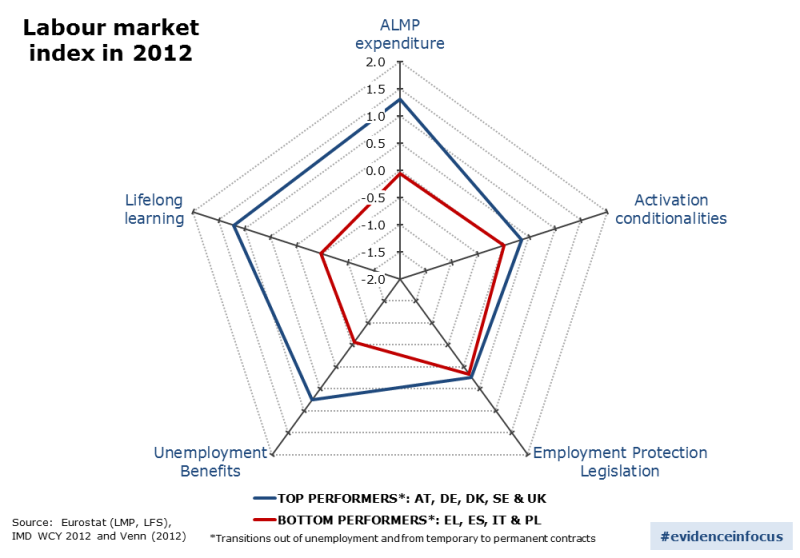How can the effectiveness of the labour market be measured in EU countries? Is it possible to find one, common but reliable index? And if so, what could it be? How fast unemployed can find a job or perhaps the percentage of people moving from temporary to permanent contracts? Do countries which record success in their labour markets have anything in common?
Experts from the Employment Analysis Unit of the European Commission’s DG EMPLO took on answering to those questions. In the Employment and social development in Europe in 2014, Chapter 1. on the Legacy of the Crisis: Resilience and Challenges, they proposed an index refering to the efficiency of “Labour Market Institutions” (LMII), understood by the authors as 5 separate labour market instruments:
- active labour market policies (ALMP),
- unemployment benefits,
- lifelong learning policies,
- employment protection legislation,
- activation conditionalities.
According to the authors of said report, the instruments mentioned above are the key to efficiently functioning labour markets and thus are the basis of the Labour Market Institutions Index (LMII). The spider chart presented below shows all instruments together and matches them with labour market outcomes. As one can see, Poland in 2012 was placed among the EU countries with the lowest rating. Countries with the highest LMI Index were: Austria, Denmark, Germany, Sweden and the UK.
The key aspect seems to be such planning and implementation of labour market institutions, which will mutually complement one another to develop the synergy in the labour market.

The report 2014 Employment and Social Developments in Europe is available here.
The part concerning the above analysis can be found in Chapter 1 of the report.
Source: ec.europa.eu











